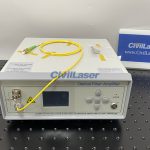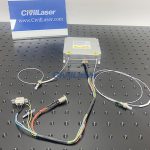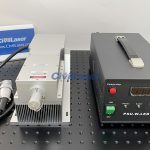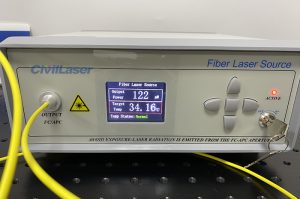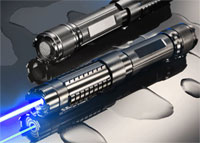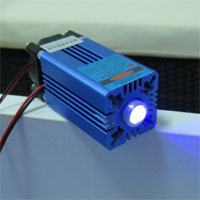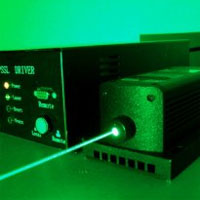Tag Archives: laser beam
532nm DPSS Laser VS 520nm Semiconductor Laser
532nm and 520nm are both common green lasers in the laboratory. The difference is that one is a diode pumped solid state(DPSS) laser and the other is a semiconductor laser.
532nm is a commonly used wavelength in dpss laser. DPSS lasers have advantages in compactness and efficiency over other types, and high power DPSS have replaced ion lasers and flashlamp-pumped lasers in many scientific applications, and are now appearing commonly in green and other color laser pointers.
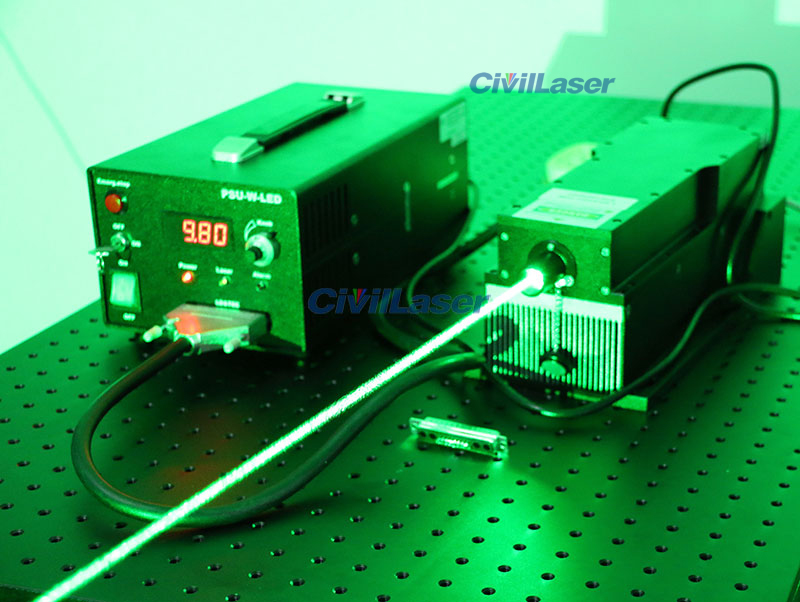
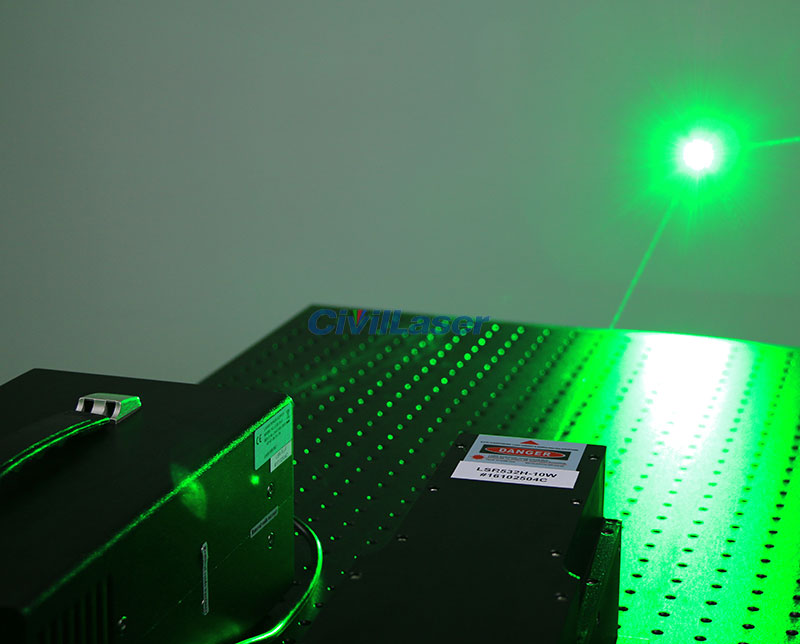
The choice of the semiconductor material determines the wavelength of the emitted beam, which in today’s laser diodes range from infra-red to the UV spectrum. Laser diodes are the most common type of lasers produced, with a wide range of uses that include fiber optic communications, barcode readers, laser pointers, CD/DVD/Blu-ray disc reading/recording, laser printing, laser scanning and light beam illumination. With the use of a phosphor like that found on white LEDs, Laser diodes can be used for general illumination.
520nm 12W semiconductor laser.
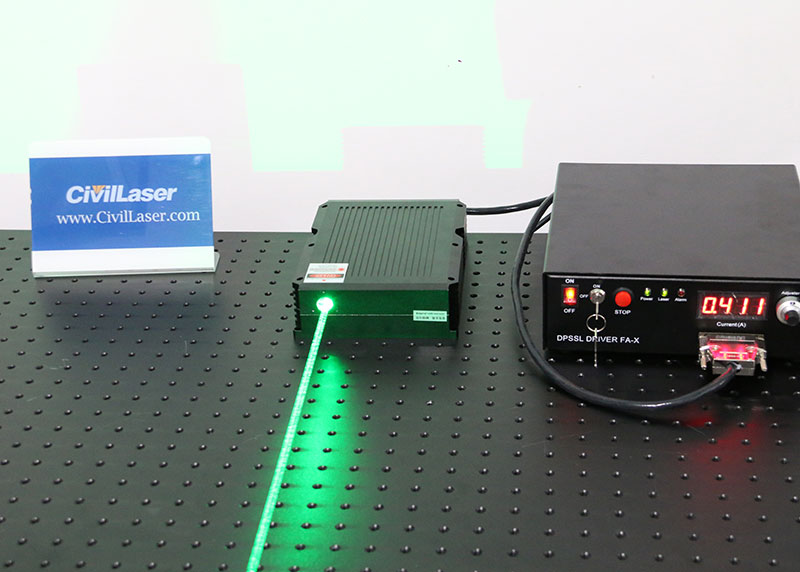
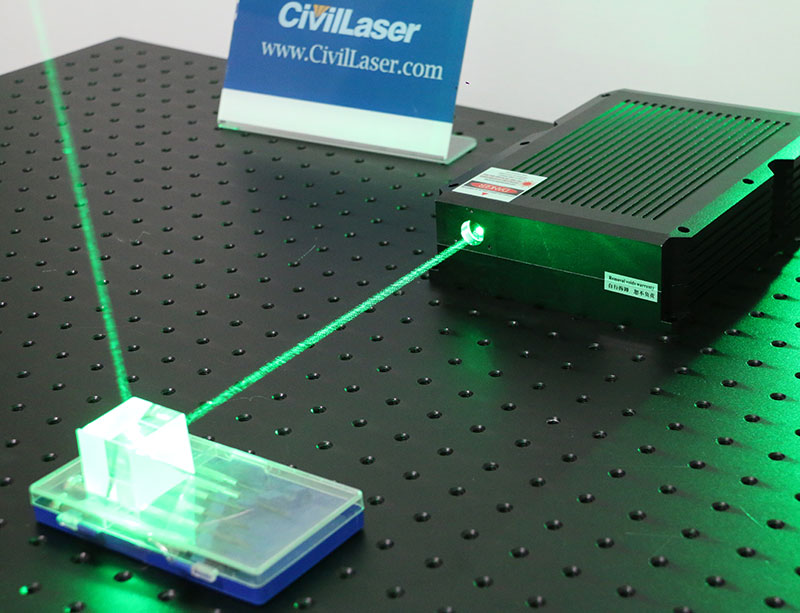
Custom fiber coupling is available for either 532nm dpss laser or 520nm semiconductor lasers. Please go to CivilLaser for details.
405nm Semiconductor Laser 12W Powerful Laser Source
This is a 405nm 12W blue-violet laser System. It is high power solid state laser with a heat sink installed at the bottom of the laser module. The radiator is aluminum with 2 cooling fans. Configuring a heat sink can effectively extend the continuous working time of the laser. There are 3 working modes on the back of the laser power supply: CW/TTL/Analog. The output power of the 0~12W laser can be adjusted by the Adjustor rotary button.
The 405nm 12W laser needs a collection of multiple LDs to have such a high power, so the spot mode is also multimode.
The 405nm laser is a blue-violet laser, which is close to ultraviolet invisible light. The 12W laser is not very dazzling to the naked eye. But the energy is very strong, please wear laser safety glasses when operating.
CivilLaser have mature production technology, stable quality and short production cycle.
520nm 2800mW Green Diode laser Lab Laser System
This is a 520nm 2800mW green laser system. The laser supports 3 working modes: CW, TTL, Analog. In addition, the Lock crystal head cannot be pulled out. External signal Mod Input, no need to connect in CW working mode. It is free space output by default, fiber-coupled output can be customized.
The laser output power can be adjusted by adjusting the operating current. In addition, the red STOP button is used for emergency stop, and it is not needed under normal circumstances.
The 520nm 2800mW green semiconductor laser beam.
543nm Green Solid State Laser with SMA905 Optical Fiber
This is a 543nm solid state laser system. The output power is 100mW, it can be adjusted by the rotary button on the power supply. The red button is the power switch. The key is a laser switch. The middle LCD shows the current working current. The rotary button on the right is to adjust the current size.
There are 3 working modes for the laser to choose from. Select the working mode CW/TTL/Analog by the sliding button on the back of the power supply.
This laser coupled a 1000μm, 3 meters in length, SMA905 interface fiber, and its can be customized.
The effect of laser output from the fiber port.
High Power Laser 18W 455nm Blue Laser Source
It is 455nm 18W blue laser system. The laser head is equipped with a heat sink. The heat sink has 3 cooling fans, which can effectively extend the continuous working time of the high-power laser. There is a small power interface on the side of the data cable close to the laser head for the cooling fan. In addition, the Lock crystal head cannot be pulled out. External signal Mod Input, no need to connect in CW working mode.
This is a power tunable laser by adjusting the current. Turn the ‘Adjustor’ knob clockwise to adajust the current, when the current exceeds the minimum working current, the Laser indicator turns green, and there is laser output at this time. ‘Adjustor’ rotates clockwise to the end, which is the maximum working current and the maximum output power of the laser. In addition, the red STOP button is used for emergency stop, and it is not needed under normal circumstances.
Safety reminder:
Wear laser safety glasses when operating high-power lasers. It is forbidden to irradiate human eyes and skin with laser light.
Various wavelengths of the laser beam/ Laser Knowledge — CivilLaser
Various wavelengths of the laser beam/ Laser Knowledge — CivilLaser
1. Brightness: Green laser beam > Red laser beam > Blue-violet laser beam
2. Price: Blue-violet laser beam > Green laser > Red laser
3. Poly thermal performance (Burning feature): Blue-violet laser = Red laser > Green laser
4. Stability: Red laser = Blue-violet light > Green laser(green light influenced by the climate, cold environment to make
With, you need to warm up)

Laser module — The relationship between the power,brightness and working disance
Laser module — The relationship between the power,brightness and working disance
Laser Module — Knowledge (CivilLaser)
| Output power | Brightness Level | Best Working distance | Description |
|---|---|---|---|
| <5mw | Micro Light | < 0.5 meter | 1. In less than 0.5 meters.
2. Under the weak light environment. |
| <10mw | Low Light | < 1 meter | 1. In less than 1 meters.
2. Under the weak light environment. |
| <100mw | Middle Light | < 3 meters | 1. In less than 3 meters. 2. Under 8 fluorescent lights environment. You can see the laser beam. |
| <200mw | High Light | < 5 meters | 1. In less than 5 meters. 2. Under 30 fluorescent lights environment. You can see the laser beam. |
| >250mw | Ultra-high Light | < 8 meters | 1. In less than 8 meters. 2. In good light,under unlight scattering environment. You can see the laser beam.(Direct sunlight, unavailable) |
Laser beam class level & Laser Safety Classification
Laser Level:
ClassⅠ: <0.4mW
ClassⅡ: 0.4mW ~ 1mW
Class ⅢA: 1mW ~ 5mW
Class ⅢB: 5mW ~ 500mW
ClassⅣ: >500mW
Laser Safety Classification
According to its risk level to human body, with MPE (maximal possible effect) of light beam to eyes as a standard, it can be divided into Class I, II, III and IV. Laser product makers should stick the warning label with laser safety classification on the corresponding laser products.
Class I: low output laser (power < 0.4mW), the risk to human eyes and skin will not exceed MPE value under any conditions, even after focusing ion beam through optical system. The design safety can be guaranteed, no need special management. Typically used in CD players, CD-ROM equipment, geological prospecting equipment and laboratory analytical instruments etc..
Class II: low output visible laser (power 0.4mW-1mW), the reaction time of keeping eyes closed is 0.25S, light exposure calculated in this period should not more than MPE value. Usually the laser below 1mW can cause dizziness and make you unable to think, so you close your eyes to protect them, which is not totally safe. Don’t observe things directly in the beam, don’t light directly to others eyes with Class II laser and avoid the observation of Class II laser with telescope or the like. Typically used in classroom demonstration, laser pointer, pointing devices and distance measuring instruments etc..
Class III: mid output laser, if the beam shines directly into eyes, it will hurt the eyes, for some safety reasons, it is further divided into Class IIIA and Class and IIIB.
Class IIIA: the continuous laser of visible light, with a output laser beam of 1-5mW, the beam energy density should not be more than 25W/m﹣m, avoid the observation of Class IIIA laser with the telescope and the like, or it may increase the risk. There are lots of similarities of typical applications of Class IIIA and Class II, such as laser pointer and laser scanner etc..
Class III B: the continuous laser of 5-500mW light, which will cause danger if directly observing things in the beam. However, it is safe with the min. exposure distance of 13cm and max. exposure time of 10S. Class IIIB laser is typically applied in spectrometry and light entertainment etc..
Class IV: high output continuous laser (>500mW), it is higher than the Class III, which will cause fire, and its scattered reflection is also dangerous. Typically applied in surgical operation, research, cutting, welding and micro machining etc..
Safety measures on laser processing: it can ensure safety for some general household or office laser discs or laser printer or other applied machines, as the laser light will not go out to the external construction. In addition, functional device wouldn’t be provided to some lasers that the light won’t go out. If it happens, please refer to the following countermeasures.
(1) According to the level of laser devices, specialized personnel who have a sufficient knowledge and understanding of laser safety or hazard should guide in the laser treatment.
(2) Personnel producing lasers above Class III shall be competent on the basis of appropriate education of safe operation.
(3) Don’t view the light path directly if laser devices in action don’t emit laser light.
(4) When turning down the optical axis during the adjustment of laser resonator, the laser light will emit suddenly, so please always pay attention to the eye position when handling.
(5) If infrared light invisible to the eyes is adopted for large CO2 laser, people nearby should pay special attention to it.
(6) If reflected light or pot shoot light cannot be avoided, users can wear protective glasses when using lasers above Class III.
Different laser wavelengths, What are the shape of the laser spot?
Different laser wavelengths, What are the shape of the laser spot?
445nm is a multi-mode, rectangular beam;
405nm is an ellipse;
808.980,780,1064,635,650 are square spot;
The rest is almost round.
What is the usage of high quality of spot?
Professional research and detection will have high requirement on the spot quality, if only for entertainment, there is no practical significance.
The relationship between laser wavelength and laser color
The relationship between laser wavelength and laser color








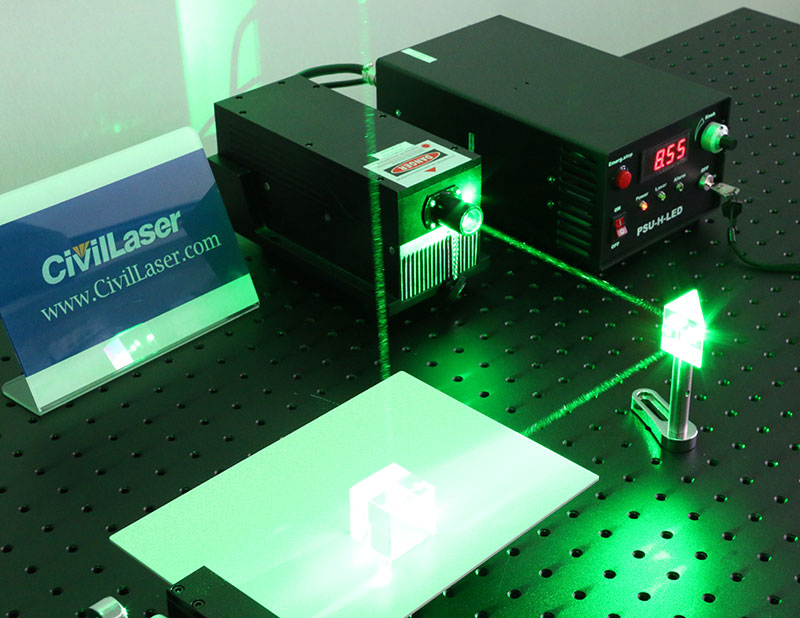
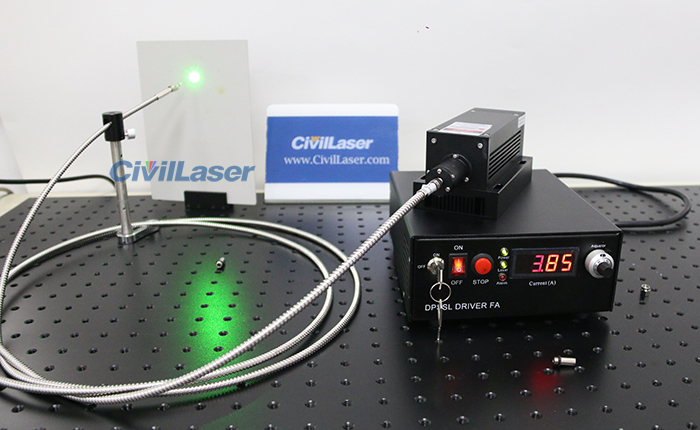
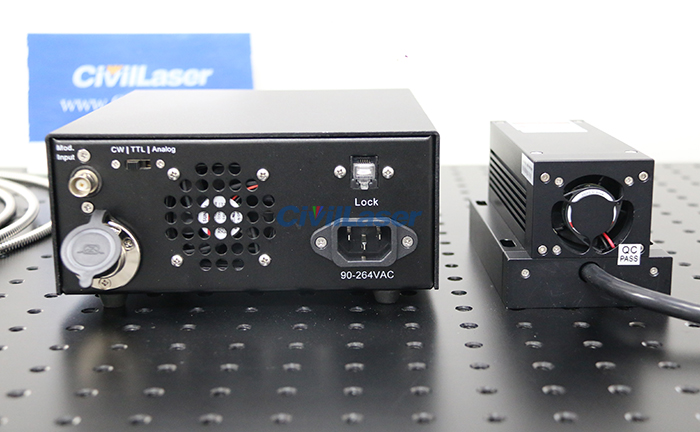
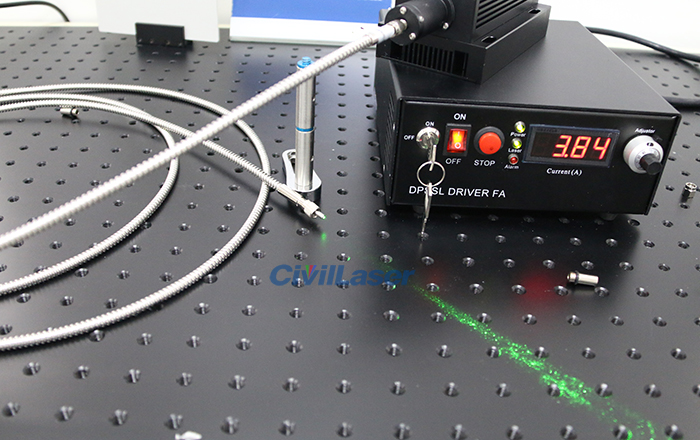
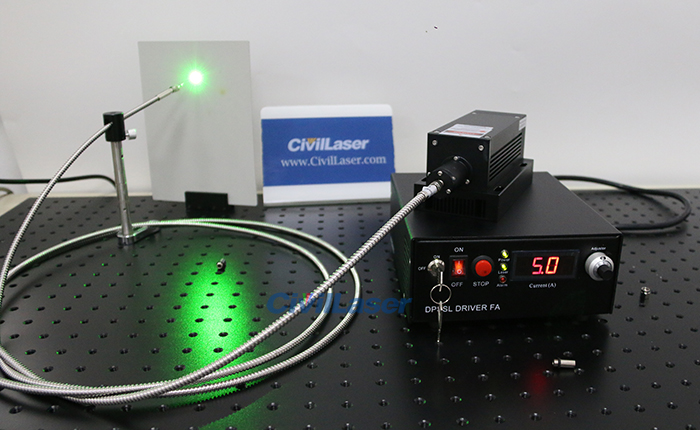
.jpg)
